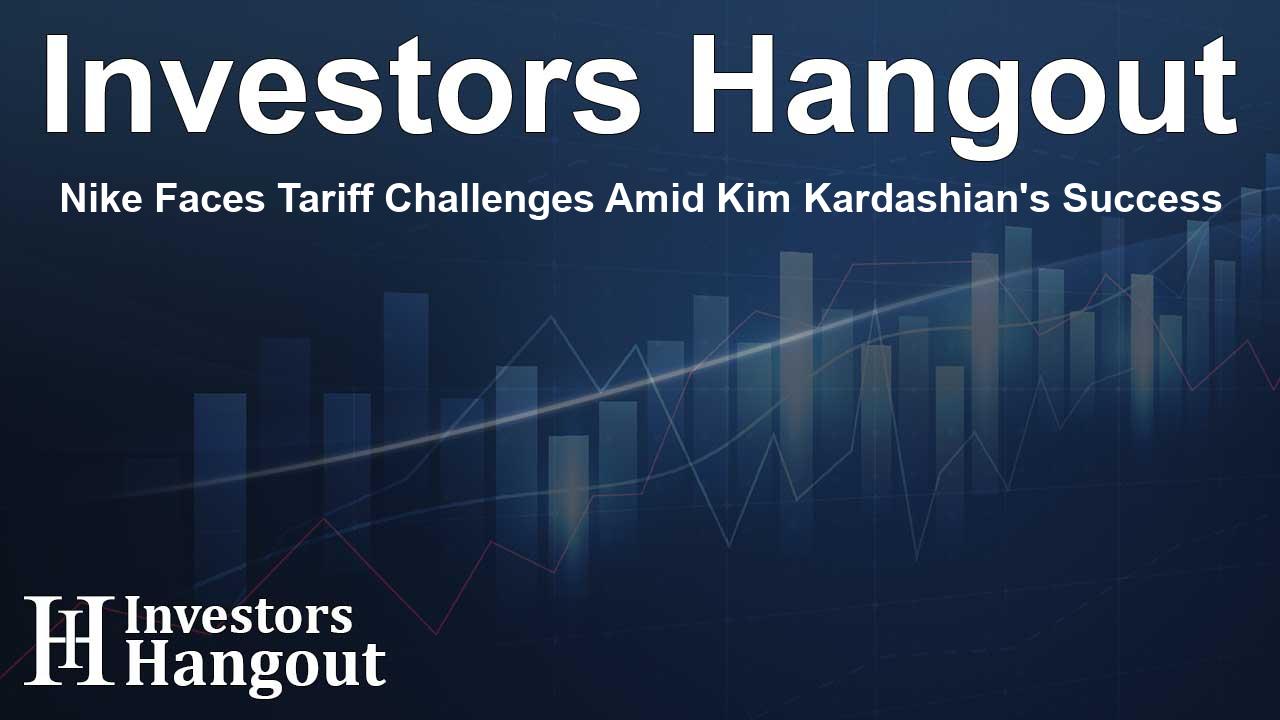Nike Faces Tariff Challenges Amid Kim Kardashian's Success

Nike's Strategic Moves Amid Tariff Woes
Nike Inc. (NYSE: NKE) is currently facing contrasting scenarios, with a promising partnership with Kim Kardashian's SKIMS on one side and formidable financial challenges posed by U.S. tariffs on the other. This balance of progress and obstacles highlights the company's resilience and adaptability in a fluid market environment.
Impact of Tariffs on Nike
The shoe giant recently reported in its fiscal earnings call that escalating tariffs are projected to cost the company around $1.5 billion annually. This staggering amount underscores the financial pressures the corporation must now navigate as tariffs have increased by 50% from initial estimates of $1 billion within a short span.
Financial Implications Highlighted by Leadership
Chief Financial Officer Matthew Friend has communicated to investors that these tariffs pose a significant challenge to the company. Friend noted, "We now estimate the gross incremental cost to NIKE on an annualized basis to be approximately $1.5 billion," implying a net effect of 120 basis points on the company's gross margin for the current fiscal year. This stark reality presents a tough landscape as Nike aims to maintain its market position.
Positive Consumer Response to SKIMS Collaboration
On a brighter note, Nike has recently launched a collaboration with SKIMS, resulting in a collection of 58 new performance training styles. CEO Elliott Hill has enthusiastically reported that the consumer response has been notably strong, framing this partnership as an innovative approach to engage new audiences. Hill’s vision for the collaboration showcases not just a blend of style and function but also strategic market expansion.
Positive Outcomes from Strategic Adjustments
The SKIMS partnership is part of Hill's broader strategy termed "Win Now." This initiative reflects positively on Nike's performance in several areas, particularly its Running division which saw a surge exceeding 20% in growth. Additionally, the North American market showed encouraging signs of recovery with a revenue increase of 4%, reinforcing Hill's strategy amidst other market challenges.
Ongoing Turnaround Efforts
Despite these successes, Hill acknowledged that Nike's turnaround is still a work in progress. The company faced a 10% decline in its operations in Greater China, along with a significant 12% drop in direct-to-consumer sales, primarily due to calculated reductions in promotional efforts aimed at maintaining brand integrity.
Hill's Vision for the Future
Hill has candidly expressed that Nike's journey toward reclaiming its market strength has merely commenced. He believes that while progress may not always be straightforward, the overall direction remains positive. Hill envisions a robust recovery strategy that prioritizes customer engagement and global outreach.
Q1 Financial Overview
Nike's fiscal first-quarter revenue reached $11.72 billion, surpassing analysts’ expectations of $11 billion. Earnings per share also exceeded forecasts, reported at 49 cents compared to the anticipated 27 cents. Looking ahead to the second quarter, Nike anticipates a revenue dip, projecting low single-digit declines in sales amidst significant decreases in gross margins.
Geographical Performance Insights
In terms of geographical performance, it appears North America is set to lead the way in recovery efforts, while challenges persist in the Greater China market and with the Converse brand, which are likely to remain hurdles throughout the fiscal year.
Current Stock Performance
On the stock market front, Nike saw a modest increase of 0.26%, closing at $69.73 on Tuesday, with an after-hours uptick of 4.48%. Year-to-date, however, NKE stock has experienced a decline of 5.35%, and over the last year, it has fallen by 21.77%. These statistics reflect a complex and changing market landscape for investors.
Understanding Market Trends
As Nike navigates these turbulent waters, industry observers are keenly focused on how external economic factors, such as tariffs, impact future earnings. The stock’s weak trend in the short, medium, and long-term suggests a moderated outlook that investors will need to consider moving forward.
Frequently Asked Questions
What new partnership has Nike formed recently?
Nike has recently partnered with Kim Kardashian's SKIMS to launch a performance training line featuring 58 new styles.
How much is Nike estimated to lose due to tariffs?
Nike estimates that new tariffs will cost the company approximately $1.5 billion annually.
What are the recent earnings reports for Nike?
Nike reported first-quarter revenue of $11.72 billion, exceeding analyst expectations of $11 billion.
How has Nike's stock performed recently?
Nike's stock closed at $69.73, reflecting a year-to-date decline of 5.35% and a year-over-year fall of 21.77%.
What are the challenges Nike faces currently?
Nike is dealing with tariff impacts, declining sales in Greater China, and a drop in direct-to-consumer sales.
About The Author
Contact Owen Jenkins privately here. Or send an email with ATTN: Owen Jenkins as the subject to contact@investorshangout.com.
About Investors Hangout
Investors Hangout is a leading online stock forum for financial discussion and learning, offering a wide range of free tools and resources. It draws in traders of all levels, who exchange market knowledge, investigate trading tactics, and keep an eye on industry developments in real time. Featuring financial articles, stock message boards, quotes, charts, company profiles, and live news updates. Through cooperative learning and a wealth of informational resources, it helps users from novices creating their first portfolios to experts honing their techniques. Join Investors Hangout today: https://investorshangout.com/
The content of this article is based on factual, publicly available information and does not represent legal, financial, or investment advice. Investors Hangout does not offer financial advice, and the author is not a licensed financial advisor. Consult a qualified advisor before making any financial or investment decisions based on this article. This article should not be considered advice to purchase, sell, or hold any securities or other investments. If any of the material provided here is inaccurate, please contact us for corrections.
